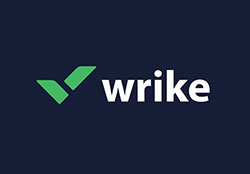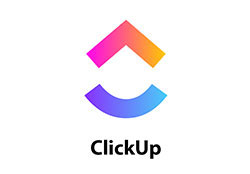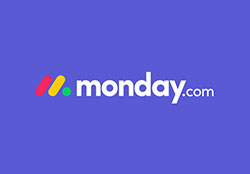Imagine your project as a sleek, well-oiled machine; every cog turns smoothly, propelling toward that satisfying finish line—the perfect delivery.
Suddenly, there’s an urge to add just one more feature, a little extra shine; that’s when the allure of gold plating sets in.
In project management, this splendorous yet potentially perilous practice can derail even the most meticulously laid plans.
This article cracks open the gilded lid on gold plating, exploring the balancing act between exceeding expectations and veering off the mapped-out path of scope and objectives.
Within these paragraphs lies the blueprint to navigate the sparkling temptation of adding unrequested upgrades, over-engineering, and those non-essential additions that risk project scope.
Unearth strategies to avoid scope creep, maintain stakeholder satisfaction, and keep a firm grip on your project’s triple constraint—scope, time, and cost.
By article’s end, you’ll be armed with insights to recognize the glittering minefield of gold plating and ensure your project’s delivery is as shiny as intended—no extra polish needed.
Key takeaways
- Gold plating refers to the practice of adding extra features to a project’s scope that were not part of the original agreement, aiming to enhance client satisfaction without causing project blockages.
- It relies on the project manager’s judgment to exceed client expectations without increasing costs for the sponsors, and is intended as a bonus to gain favor.
- While it is meant to please the client, gold plating can sometimes backfire, potentially devaluing other project achievements and best avoided if it risks the project’s agreed scope.
- Gold plating is not budgeted for and can lead to additional testing and resource consumption, which can be detrimental when time is limited.
Examples of Gold Plating
- A team member may insert additional features without consulting the higher-ups
- A project manager might add new goals to garner attention from the client
- Gold plating can be a distinction from certain subpar aspects of the project
- Either way, gold plating should appease the client
With that said, there are cases where gold plating will do more harm than good. It may devalue the other achievements of the work breakdown structure. In such scenarios, it’s best to stick to the agreed-upon scope.
For instance: Adding a short video to a software project is a good idea. After placing one on the client’s landing page, they ask for more to be made. So, the team will have to put in extra hours since this is outside the agreement.
That’s why any gold plating should fit the standard methodical procedure. That way, neither the budget nor the team will suffer. Preserving the initial timeline is a goal you should never ignore.
Problems and Common Difficulties
A Few Causes of Slowdowns
Inflating a project mid-way can upset the team’s tempo. To scope creep the work means putting a lot on the line for an extra feature. Before long, it can cause you to push a deadline further than you would’ve otherwise. Gold plating in project management can only worsen this trend.
Not a Cost-Effective Option
The project’s budget won’t account for gold plating. Plus, it can warrant an extra testing period and eat up other resources. This is bad news when already pressed with time.
Impose a Different Workflow
Once you alter courses in that way, the team may wonder what to do first. So, running after customer expectations can confer the project team. Even when based on the best intentions, the additional cost might incite a veto.
Can Lead to a Failed Project
Even if the extra add-ons don’t affect the client’s pocket, they might change the final outcome. As such, they’d be products outside of the client’s approval.
Depending on the original agreement, this might be a deal-breaker. Next, the client might opt to dismiss the work and won’t accept the product.
Warrants Regulatory Requirements
Some clients may take gold plating for granted. Thus, they would ask for such freebies on all future tasks.
If the client approaches it that way, you should stop the scope creep. It will keep on creating responsibilities for the team without reason.
Stick to the Best Case Scenario for Your Position
- Enforce a rule that all changes must wait for PMP approval. Make it clear that you don’t want any uncontrolled changes within the project. Thus, you’ll prevent an extra cost from appearing
- Stick to the common principles. Regardless of the market conditions, no team members should alter the work on their own. Instead, they should raise any idea to the higher-ups first
- Establish clear communication channels. Even at the later stages, keep looking for a sudden unauthorized change.
In other words, to keep your client happy, stick to their wishes. If the team adds something to the to-do list, everyone should discuss it in detail. Also, if you notice a way to improve the order, notify the client first of all. Also, schedule an impact analysis if they do agree.
A Definition of Scope Creep
Scope creep refers to the practice of further changing a project as it develops. This is usually done without any additional testing.
In such cases, it becomes very difficult to keep the team focused. So, most leaders try to avoid managing scope creep. However, sometimes it can follow gold plating in project management.
How Scope Creep Occurs
The list of most common triggers for this includes:
- Off-the-record orders between the client and a team member
- A member acts on their own without a proper review period. This can happen even if you encourage open communication
- Miscommunication between the team and the clients or stakeholders.
- Not feasible time constraints and deadlines
- A bug in the quality assurance process
- Missing project scope statement that alters the product scope
Hot to Avoid Scope Creep
Project managers should not allow space for sudden scope creep. Otherwise, they might have to schedule delays. Here are a few approaches that can prevent it:
- Observe your team’s wishes and change management if necessary
- Don’t ask for new features
- Handle all client communication instances
- Often call for inputs from your team members
- Demand frequent progress updates
How to Spot Scope Creep
Assume you’ve already delivered the first leg of the project. As soon as the team starts moving to the next phase, the client asks for a change. Thinking it’s not a hefty change, you accept. However, it starts impacting the project scope in a major way.
Before long, this added feature affects the ongoing work and causes cost overruns. Plus, you’ll need to check and review the new product, which also demands resources.
Scope Creep and Gold Plating – Key Differences
Although similar in a practical sense, these activities have varying outcomes. Generally, project managers resort to gold plating to make headway elsewhere. So, they try to cover some mishaps in that way or shoot for a better deal later on. Hence, it’s more of a controlled risk.
In comparison, scope creep can also originate from the client. It may follow a successful gold plating attempt, but this is not a rule. Either way, the added costs will follow on the company’s back. Granted, unless there are changes to the initial agreement.
Are you looking for a great project management app?
Here are our recommendations:
FAQ On Gold Plating In Project Management
What exactly is gold plating in project management?
Gold plating happens when someone throws in extras, those added bells and whistles that the client didn’t ask for. It’s like delivering a pizza with extra toppings no one ordered. Sure, the project looks fancier, but these frills weren’t part of the original plan or project scope.
How does gold plating affect project budget and timeline?
Think about it. Any extra feature costs time and money, right? Gold plating sneaks in additional work that stretches the budget thinner and can push deadlines further out. Suddenly, you’re juggling resources that weren’t accounted for in your WBS, and that’s a recipe for trouble.
Can gold plating ever be positive for a project?
It’s a risky move. Once in a blue moon, clients might be wowed by the initiative, equating it to above-and-beyond service. But beware, it sets unrealistic expectations.
Mostly, gold plating is seen as wasted effort, potentially causing friction over unnecessary features when client requirements weren’t even whispering that tune.
Does gold plating differ from scope creep?
Sure does. Scope creep is like a stealthy shadow that slowly engulfs your project, often with client’s or stakeholders’ fingerprints all over it. Gold plating, though, that’s all on us—the team adding stuff without anyone asking. Both are project monsters, but they wear different costumes.
Why do project teams engage in gold plating?
It’s a mix of good intentions and a dash of vanity. Teams sometimes think, “Hey, let’s give them more bang for their buck.” It stems from wanting to impress or outdo expectations. Other times, they might not even realize they’ve crossed into over-engineering territory.
What strategies can prevent gold plating in a project?
Sticking to the project charter like super glue. Clear communication channels, solid change management, and tight change control processes are your best friends. Keep the project boundaries well-guarded, agreeing to any enhancements through proper channels—that’s where your PMBOK and Agile methodologies shine.
How can I explain the risks of gold plating to my team?
Storytime! Use real-life scenarios where gold plating caused projects to nosedive. Highlight the drama—missed deadlines, budgets blowing up, and client trust crumbling.
Sprinkle in some wisdom about the importance of meeting customer expectations without slipping into the abyss of extra work no one signed off on.
What’s the difference between adding value and gold plating?
Adding value is like fulfilling a secret wish the client has, something they’d love but haven’t mentioned. If it’s in the scope and provides genuine benefits without hampering the project’s health, you’re golden. Gold plating, on the other hand, is unsolicited fanciness that can clutter up project deliverables.
Are there any particular industries or projects where gold plating is more common?
Tech’s a big one. With all the rapid innovation, it’s tempting to toss in the latest and greatest features just because you can. But honestly, it can creep into any industry where the line between essential upgrades and bells and whistles gets blurry.
How can project managers ensure client requirements are met without gold plating?
Diligent scope statement reviews and sign-offs, my friend. It’s about aligning with client expectations and keeping your focus laser-sharp on project deliverables that were agreed upon. Ask questions, clarify, and then ask some more—just to make sure you’re hitting the mark, minus the unwanted glitter.
Conclusion
So, here we are, rounding the final turn on our deep dive into gold plating in project management. It’s been quite the ride, hasn’t it? Like weaving through uncharted backstreets to avoid the flashy pitfalls and keeping our wheels strictly on the practical pavement.
We’ve unpacked the extras, the unasked-for features, and how they barge in uninvited, trying to party-crash our well-planned scope. We’ve seen the toll it can take, not just on resources and deadlines but on stakeholder trust, too.
Takeaways? Keep it tight. Stick to the blueprint—your project scope. Safeguard that budget, time, and quality with a level-headed approach to change management. And always, always communicate; it’s the golden thread stitching the project success narrative together.
In essence, delivering that perfectly balanced project—not too dull, never over-polished—is the real gold standard we’re aiming for. Let’s design those projects to shine, just the right amount, every time.
If you liked this article about gold plating in project management, you should check out this article about what is crashing in project management.
There are also similar articles discussing project management software for startups, project management forecasting, s curve in project management, and innovation frameworks.
And let’s not forget about articles on lag time in project management, primary and secondary stakeholders, operations management vs project management, and project management OKRs.
- Design’s Descent: What Happened to Fab? - April 19, 2024
- Design Basics: iPhone App Icon Size Requirements - April 19, 2024
- Quick Guide For Developing Mobile Games - April 18, 2024












